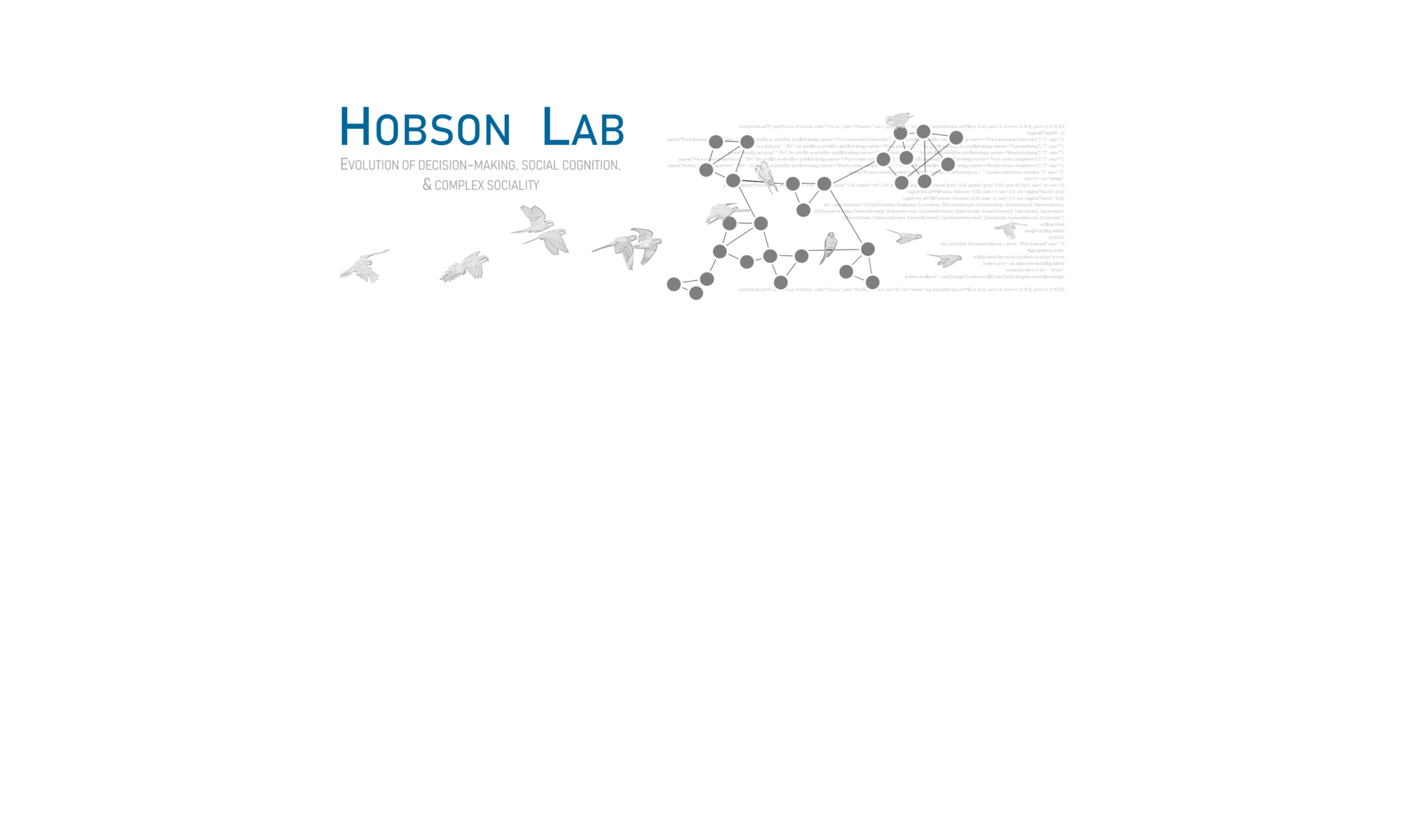I participated in (and gave a talk at) a working group at SFI where we focused on collective computation in animal and human model systems, using both behavior and neural data to try and understand commonalities in how individuals come to consensus decisions. I talked about some of my work with animal conflict, and how to detect consensus structural rules within fighting patterns, and also some of my work with animal signaling.

From the SFI website:
May 9-11, complexity scientists are meeting at SFI to examine how collective decisions get made in biological systems and to what degree those systems share a mechanism from one system to the next.
“From neurons making decisions in the brain to fish deciding which way to swim, to cell differentiation — you have one type of stem cell that eventually makes a choice to be a heart cell or a liver cell — they share some of the same properties, we think,” says Bryan Daniels, an ASU-SFI researcher and one of the organizers of the working group. “We have a few overarching ideas, conceptual frameworks, and the goal is to see to what extent they actually match to this diversity of systems.”
One commonality observed in diverse systems with multiple decision-making actors involved has been a two-step overall decision-making process that consists of information accumulation followed by a period of aggregation, where that information is turned into actions.
SFI’s Collective Computation group (C4) observed this in data drawn from neurons involved in a perceptual decision task. At one point, the upcoming decision was coded in a distributed way among many of the neurons, but this rapidly changed. According to Daniels, all of the neurons came to consensus “just before the actual output.”
A similar process has been observed in ants choosing a nest. Early on, scouts would go to a variety of nests seeking an optimal colony site, but at a certain threshold, their actions shifted: Ants would move to just one nest, with some even picking up others to take them there.
Eventually, the hope is this type of research will yield insights into the decision-making behavior of groups of humans. Whether observing the process in a variety of biological systems can shed light on ways to optimize the process or outcomes — for example, by altering how much time to give to either the information accumulation or the ultimate decision making phases.
“The first thing we wanted to do is ask: how is it done in biology?” Daniels says, “the obvious extension is to ask if this is a better way of doing this computation.”





